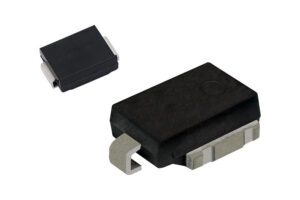 Vishay Intertechnology introduced three new series of 24 V surface-mount XClampR transient voltage suppressors (TVS) that offer high peak pulse power dissipation equivalent to the 7 kW of conventional TVS at 10/1000 μs in the SMC (DO-214AB) package and 10/10 000 μs in the DO-218AB. The bidirectional devices deliver high power density over a wide operating temperature range of -55 °C to +175 °C for automotive, telecom, and industrial applications.
Vishay Intertechnology introduced three new series of 24 V surface-mount XClampR transient voltage suppressors (TVS) that offer high peak pulse power dissipation equivalent to the 7 kW of conventional TVS at 10/1000 μs in the SMC (DO-214AB) package and 10/10 000 μs in the DO-218AB. The bidirectional devices deliver high power density over a wide operating temperature range of -55 °C to +175 °C for automotive, telecom, and industrial applications.
With a low clamping voltage of 24 V maximum, XMC7K24CA series devices offer a higher peak pulse current (Ippm) of 180 A at 10/1000 μs — equivalent to the 7 kW power rating of conventional TVS — in the SMC package. With a clamping voltage of 26 V maximum, the XLD5A24CA and XLD8A24CA series offer Ippm of 120 A and 180 A at 10/10 000 μs, which is equivalent to the 4.6 kW and 7 kW power ratings of conventional TVS, respectively, in the DO 218AB package.
Suitable for high-reliability applications, the Vishay General Semiconductor TVS released today are available in AEC-Q101 qualified versions and offer extremely stable breakdown voltages from 26.7 V to 29.5 V over their entire operating temperature range. Designed to protect sensitive electronic equipment against voltage transients induced by inductive load switching and lightning, the TVS are intended for automotive load dump protection and signal line protection in industrial robot arms and telecom systems.
For applications with stand-off voltages greater than 24 V — such as 48 V belt starter (BSG) and integrated starter (ISG) generators in mild hybrid electric vehicles (HEV) —XLD5A24CA, XLD8A24CA, and XMC7K24CA series devices can be paired in series with a standard TVS. The devices are RoHS-compliant and halogen-free, and they offer a moisture sensitivity level (MSL) of 1 in accordance with J-STD-020, LF maximum peak of 245 °C.

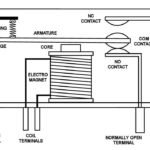
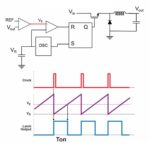
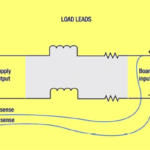
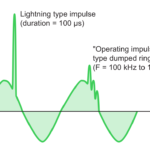

Leave a Reply